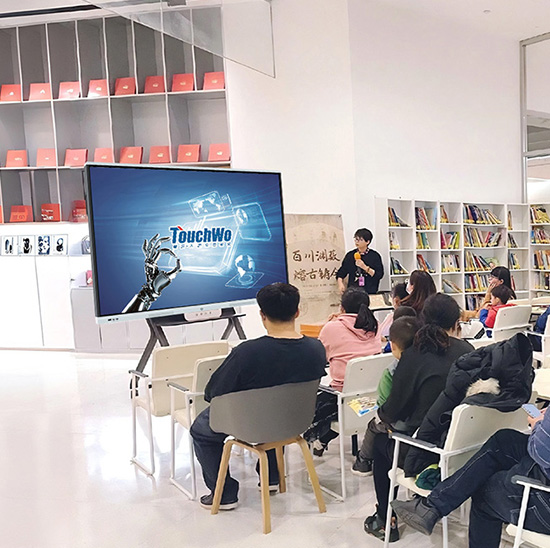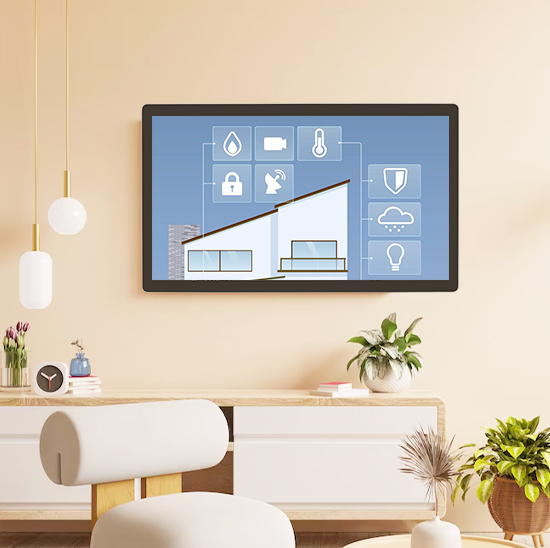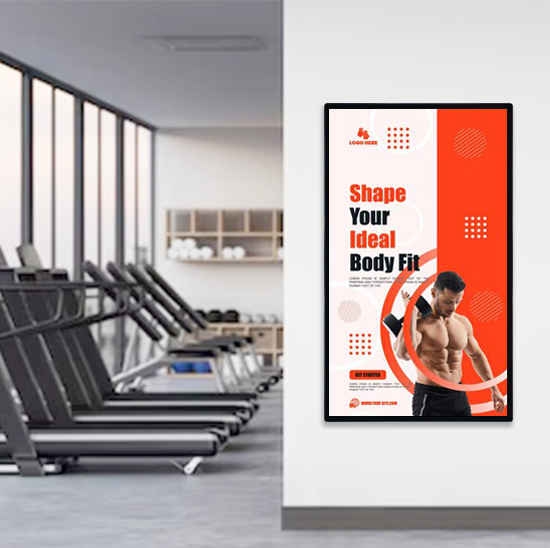In the evolving landscape of modern education—where student engagement, interactive learning, and tech integration are key to effective teaching—Touch Screens for Interactive Whiteboards (Schools/Colleges) have become an indispensable tool. Unlike traditional whiteboards or basic projectors that limit interaction, these specialized touch screens transform static lessons into dynamic, collaborative experiences. For teachers and professors across K-12 schools and higher education institutions, they enable real-time annotation, multimedia integration, and student participation—all while withstanding the rigors of daily classroom use. Whether installed in elementary classrooms, high school science labs, or college lecture halls, Interactive Whiteboard Touch Screen bridge the gap between educators and digital-native students, fostering active learning and knowledge retention.
This article explores their core features, key applications, and transformative benefits, helping school administrators and educators select touch screen solutions that elevate teaching effectiveness and student engagement.

Core Features of Touch Screen for Interactive Whiteboards (Schools/Colleges)
1. Multi-Touch & Collaborative Interaction
The defining advantage of Interactive Whiteboard Touch Screen is their ability to support dynamic, collaborative learning—critical for engaging modern students:
Multi-user touch support: Up to 10 simultaneous touch points enable group activities (e.g., students solving math problems together) or peer-to-peer collaboration on projects.
Natural gesture control: Intuitive gestures (zoom, rotate, drag) mirror smartphone/tablet use, reducing learning curves for students and teachers familiar with consumer tech.
Pressure-sensitive annotation: Simulates pen and marker effects (thickness, color blending) for precise note-taking, drawing diagrams, or highlighting text in digital materials.
2. Durable & Classroom-Ready Design
Educational environments demand equipment that withstands frequent use, accidental impacts, and daily wear—and these touch screens deliver:
Scratch-resistant tempered glass: 4mm thick, anti-glare glass resists marker scratches, eraser friction, and accidental bumps from backpacks or classroom equipment.
Child-safe & robust build: Rounded edges, shatterproof glass, and sturdy frames meet safety standards for K-12 use, while spill-resistant surfaces (IP54 rating) handle accidental liquid spills (e.g., water, juice).
Long-lasting performance: Industrial-grade components ensure 50,000+ hours of continuous use (6+ years of daily classroom operation), reducing replacement frequency and costs.
3. Seamless Educational Content Integration
These touch screens sync with the tools educators rely on to create and deliver lessons:
Learning platform compatibility: Works with leading educational software (e.g., Google Classroom, Microsoft Teams for Education, Canvas, SMART Learning Suite) to display and interact with lesson plans, assignments, and digital textbooks.
Multimedia support: Directly plays videos (e.g., educational documentaries), audio clips (e.g., language recordings), and interactive simulations (e.g., science experiments) without external devices.
Device connectivity: Wirelessly connects to teachers’ laptops, tablets, or students’ devices (via Wi-Fi/Bluetooth) for screen mirroring, content sharing, or student submissions.
4. Accessible & Inclusive Learning Features
To cater to diverse student needs and learning styles, these touch screens prioritize accessibility:
High visibility & readability: 500+ nits brightness and high contrast ratios ensure clear visibility even in well-lit classrooms, with adjustable font sizes for visually impaired students.
Accessibility tool integration: Compatible with screen readers (e.g., JAWS), speech-to-text software, and closed captioning tools to support students with disabilities.
Multilingual support: One-touch language switching (20+ languages) and translation features cater to diverse student populations (e.g., ESL learners in K-12 or international students in colleges).
5. Easy-to-Use & Low-Maintenance Operation
For busy educators and school IT teams, these touch screens minimize setup and upkeep time:
Plug-and-play functionality: Simple connectivity to projectors, speakers, or printers, with intuitive software interfaces that require minimal training (30 minutes or less for teachers).
Remote management: IT administrators update software, troubleshoot issues, or push lesson templates to multiple whiteboards via a central dashboard, reducing on-site support needs.
Energy-efficient performance: Auto-power-off (after 15 minutes of inactivity) and low-power modes cut energy consumption, aligning with school sustainability goals.
Key Applications of Interactive Whiteboard Touch Screen in Schools/Colleges
1. K-12 Classrooms (Elementary to High School)
In K-12 settings, these touch screens make lessons engaging and age-appropriate for young learners:
Elementary education: Interactive games (e.g., alphabet matching, number puzzles) and colorful animations turn foundational learning into play, boosting retention for young students.
Middle/high school subjects: Science teachers use 3D models and simulations (e.g., cell structures, chemical reactions) to explain complex concepts; math teachers annotate graphs and equations in real time.
Remote/hybrid learning: Integrates with video conferencing tools (e.g., Zoom, Google Meet) to stream interactive lessons, letting in-person and remote students participate equally.
2. College Lecture Halls & Higher Education
For post-secondary education, these touch screens support advanced teaching and large-group instruction:
Lecture delivery: Professors annotate lecture slides, draw complex diagrams (e.g., engineering schematics, economic models), and highlight key points in real time, keeping large classes engaged.
Collaborative research: Graduate students and faculty use multi-touch features to collaborate on data analysis, project planning, or thesis work during group sessions.
Professional programs: Medical, nursing, or design schools use high-resolution displays to showcase detailed visuals (e.g., anatomical diagrams, design blueprints) with precise annotation tools.
3. Specialized Learning Environments
In specialized classrooms and labs, these touch screens enhance hands-on and technical learning:
Science labs: Display experiment procedures, record data in real time, and compare results with digital datasets (e.g., physics force calculations, biology dissection guides).
Art & design classes: Pressure-sensitive touch supports digital drawing, painting, and design work, with compatibility with creative software (e.g., Adobe Photoshop, Procreate).
Language classrooms: Play audio clips, display pronunciation guides, and let students record and compare their speech with native speakers, improving language proficiency.
4. School Libraries & Study Spaces
In shared learning areas, these touch screens serve as collaborative hubs for students:
Group project work: Students use multi-touch features to co-create presentations, edit documents, or brainstorm ideas without huddling around a single device.
Research assistance: Access digital libraries, educational databases, or tutorial videos to support independent study and homework help.
Peer tutoring: Tutors use the screen to explain concepts, solve problems, and provide real-time feedback to peers.
Benefits of Touch Screen for Interactive Whiteboards (Schools/Colleges)
1. Increased Student Engagement & Participation
Traditional passive learning leads to disengagement—these touch screens drive active involvement:
Interactive lessons and multi-touch activities increase student participation by 60% vs. traditional whiteboards, with 75% of students reporting higher interest in class topics.
Student-led collaboration (e.g., group problem-solving on the screen) boosts confidence and communication skills, critical for academic and professional success.
2. Enhanced Teaching Flexibility & Effectiveness
Educators gain tools to adapt lessons to diverse learning styles and needs:
Multimedia integration (videos, simulations, interactive quizzes) caters to visual, auditory, and kinesthetic learners, improving knowledge retention by 40%.
Pre-built lesson templates and easy annotation save teachers 2–3 hours weekly on lesson preparation, freeing time for individualized student support.
3. Improved Learning Outcomes & Knowledge Retention
Active, interactive learning directly translates to better academic performance:
Students who learn with interactive whiteboard touch screens score 15–20% higher on tests and assignments, as hands-on interaction deepens understanding of complex concepts.
Digital note-taking and easy content sharing let students review lessons after class, reinforcing learning and reducing the risk of missed information.
4. Cost Savings & Long-Term Value
While an initial investment, these touch screens deliver long-term savings for schools and colleges:
Eliminates costs for paper, markers, erasers, and traditional whiteboard supplies, cutting annual classroom expenses by 30%.
Durable design and long lifespan reduce replacement costs, with most models outlasting traditional projectors/whiteboards by 2–3 years.
FAQs About Touch Screen for Interactive Whiteboards (Schools/Colleges)
Q1: Will teachers need extensive training to use these touch screens?
A1: No. The interface is intuitive, with familiar gesture controls (like smartphones/tablets). We provide a 30-minute training session and free online tutorials—most teachers master basic functions on day one.
Q2: Can the touch screen work with our existing educational software (e.g., Google Classroom, Canvas)?
A2: Yes. We design our screens to integrate seamlessly with all leading educational platforms and software. Our team tests compatibility and sets up the integration to ensure smooth lesson delivery.
Q3: Is the screen durable enough for elementary school students (e.g., accidental scratches, spills)?
A3: Absolutely. The 4mm tempered glass, scratch-resistant coating, and IP54 spill resistance are built for K-12 use. We test screens to withstand 100,000+ touches and minor impacts.
Q4: Can multiple students use the screen at the same time for group activities?
A4: Yes. All models support up to 10 simultaneous touch points, letting small groups collaborate on problems, projects, or presentations without taking turns.
Q5: What warranty coverage do these interactive whiteboard touch screens include?
A5: All models come with a 5-year warranty covering hardware defects, touch responsiveness, and display issues—longer than the industry average (3 years). Extended 7-year warranties are available for high-use environments.
Conclusion
Interactive Whiteboard Touch Screen are a transformative investment for schools and colleges, turning static classrooms into dynamic, student-centric learning spaces. By fostering collaboration, supporting diverse learning styles, and simplifying lesson delivery, they empower educators to teach more effectively and students to learn more actively. For school administrators looking to enhance tech integration, boost engagement, and improve learning outcomes, these touch screens deliver immediate value and long-term academic benefits. Whether in elementary classrooms, college lecture halls, or specialized labs, Interactive Whiteboard Touch Screens are redefining what’s possible in modern education.
Ready to upgrade your school or college’s classrooms with high-performance interactive whiteboard touch screens? Fill out the form on our website to connect with our educational technology experts. We’ll assess your learning environment, demonstrate integration with your existing software, and provide a customized solution proposal—helping you create engaging, effective learning experiences for your students.



